Review: Silo, “Freedom Day” & “Holston’s Pick” | Season 1, Episodes 1 & 2
Apple TV+’s sci-fi bunker drama gets off to a structurally wobbly but deeply entertaining start
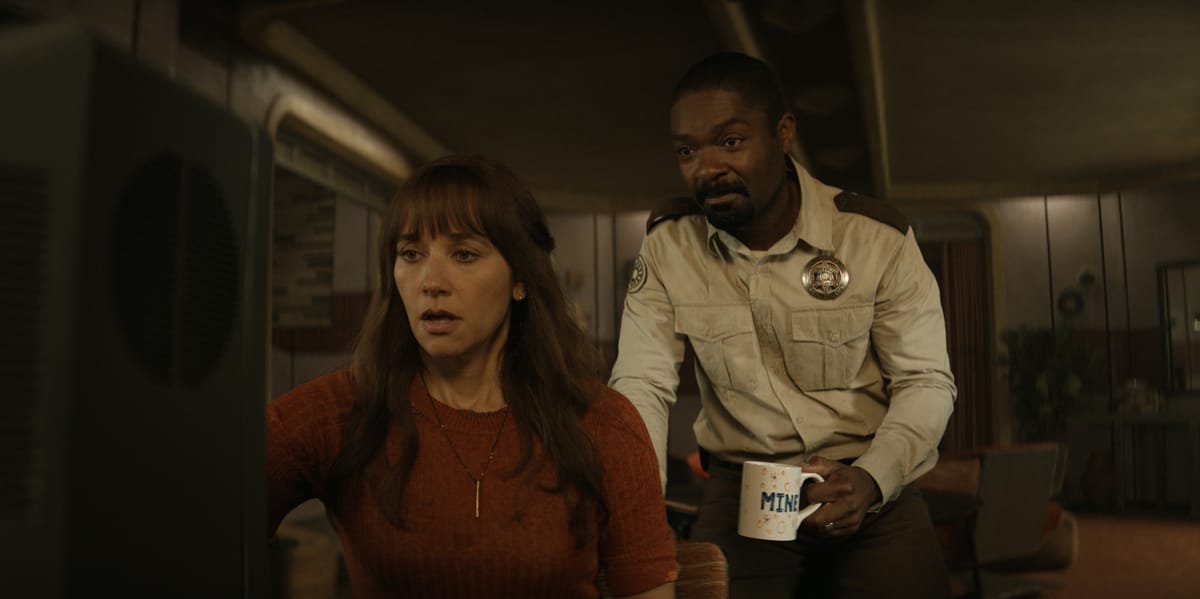
Welcome to Episodic Medium’s coverage of Apple TV+’s Silo, which debuted last year—we didn’t cover it at the time, but with a second season coming this fall and some meaningful dialogue among subscribers, we figured a summer lull was a chance to encourage some catchup. As such, Ben Rosenstock will be covering two episodes of season one a week this summer, with season two coverage to come later in the year. (He hasn’t seen the show yet, so you should be able to watch along). To join the conversation, become a paid subscriber—you can see our full summer schedule here.
The Apple TV+ drama Silo began as a novel, which began as a short story. In Hugh Howey’s “Holston,” self-published on his website in 2011 before serving as Part 1 of the complete Wool omnibus, the sheriff of an underground bunker community makes the unthinkable decision to step outside into a nuclear wasteland, following in the footsteps of his wife who died doing the same. It isn’t until the following novella, Proper Gauge, that we meet the book’s most important character, Juliette Nichols—and it isn’t until the novella after that, Casting Off, when she becomes the true protagonist.
Don’t worry, I won’t blather on about Wool too long; these reviews aren’t meant solely for “experts” à la Myles’s Game of Thrones reviews over at The A.V. Club, though I may experiment with leaving some notes for book readers at the end. Still, I think the structure of Wool helps explain the structure of these first two episodes, despite all the changes made in the adaptation process. And it accounts for both the immediate high stakes and some slight narrative clumsiness early on.
But let’s start with the basics. Silo was created by Graham Yost of Justified fame, a writer who pays a lot of attention to crafting immersive, lived-in settings. Harlan County, Kentucky was as much a main character in that earlier show as any of the leads, and the titular Silo of his newest series is much the same. Neither of these first two episodes takes too much time on world-building—we’re pretty much off to the races from the beginning—but we get a good general sense of how this underground society works, with 144 levels dedicated to different functions. The mayor and sheriff work Up Top near the surface, while many people live on residential levels in the Mids. There are farm levels, along with a powerful IT department, a repressive Judicial department, and a Mechanical team who live near the bottom and keep the Silo running. And connecting them all is a grand staircase, quiet at night but teeming with activity during rush hour.
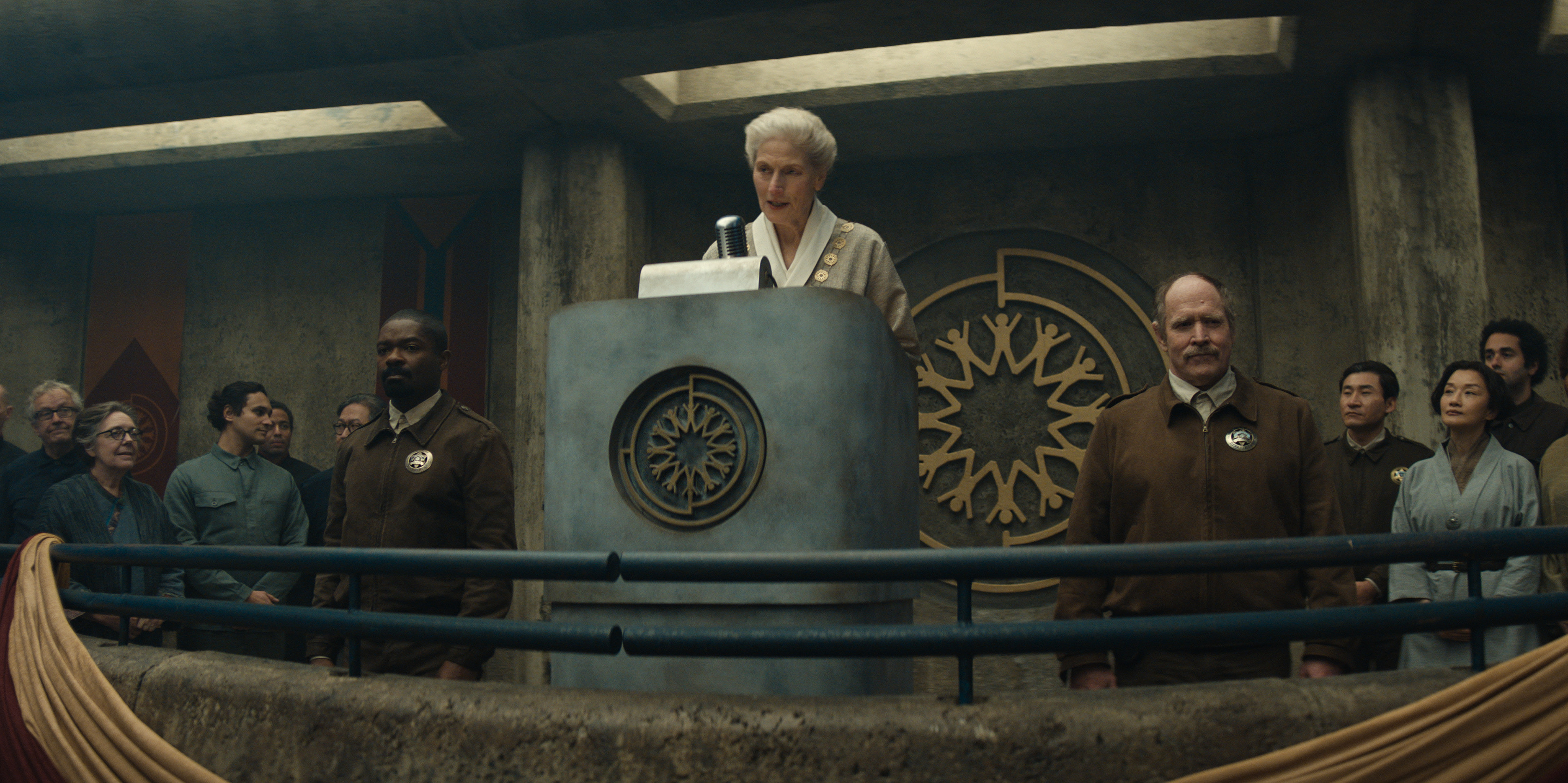
This early on, Sheriff Holston Becker (David Oyewolo) and his wife Allison (Rashida Jones) are our point-of-view characters, introducing us to the Silo via their relationship and their individual careers. Through Holston, we meet Deputy Marnes (Will Patton), Hank (Billy Postlethwaite), Mayor Jahns (Geraldine James), and Juliette (Rebecca Ferguson) herself; through Allison, we meet fertility counselor Gloria (Sophie Thompson), along with Bernard (Tim Robbins) in IT, who will inevitably play a bigger role down the line.
Allison and Holston’s two-years-apart deaths also serve as the series’ inciting incidents, though they play out slowly instead of, say, in the first couple scenes. Allison is the real main character of “Freedom Day,” with Holston as the second lead. That means there isn’t much time to touch on the whole ensemble, especially in that first episode; Bernard only shows up briefly, while Juliette, the actual protagonist of this show, shows up at the end without any lines.
These episodes dropped at the same time, so perhaps they were always meant to be consumed as a two-hour pilot. Still, even episode two isn’t very hasty about developing the characters: Juliette comes into focus, and we meet her friend/mentor Martha Walker (Harriet Walter), but head of security Mr. Sims (Common) barely gets a line, and several other important characters haven’t popped up at all yet. We don’t have a full grasp yet of who really matters in this cast. I mean, I have an idea, but only because I’m familiar with the source material. Otherwise, the only clue is a glance at the list of regular cast members, though even they’ve started dying off early.
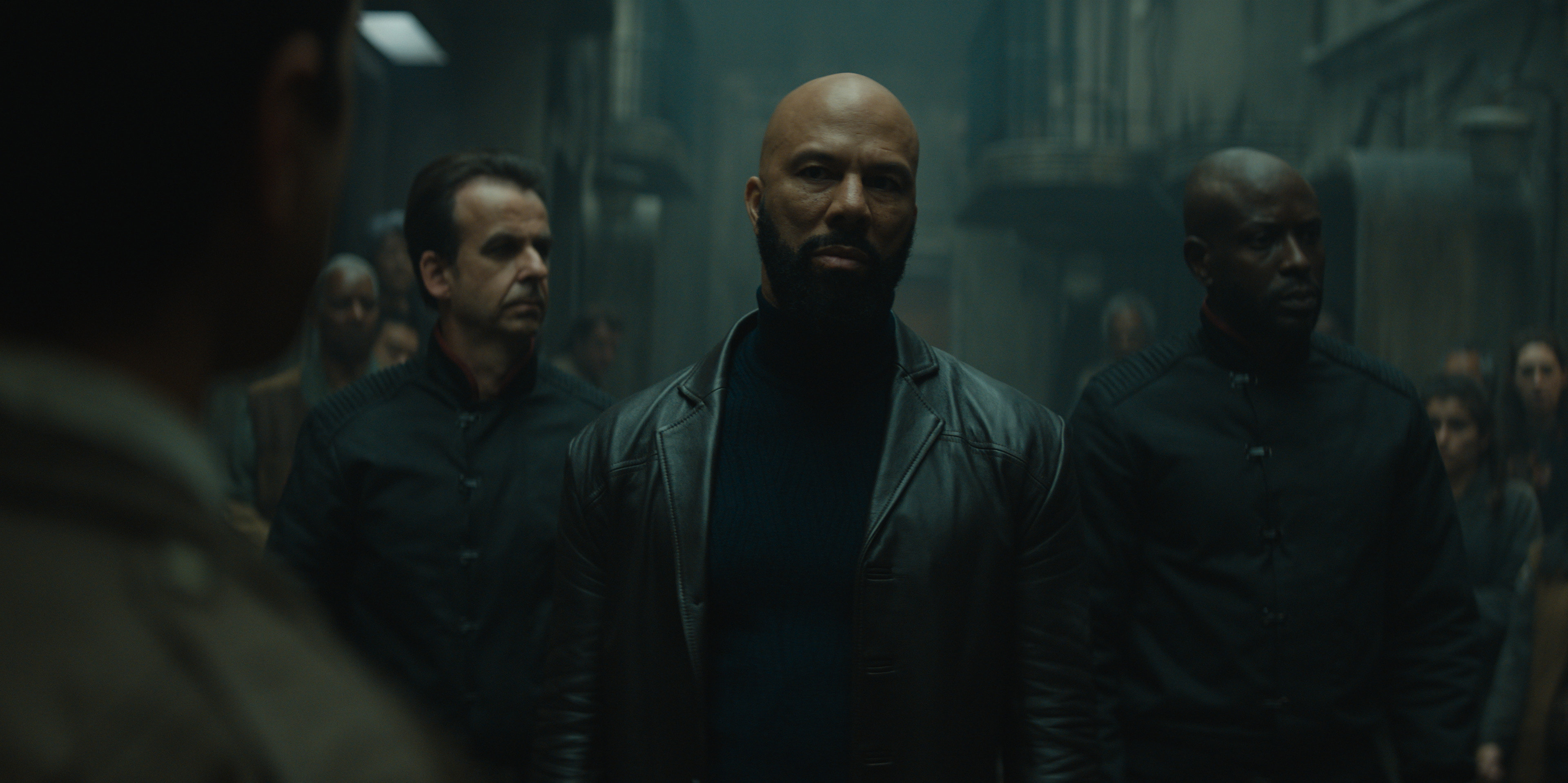
In other words, this opening pair of episodes feels slightly haphazard on a structural level; I’m never not entertained by what I’m seeing, but they feel a bit like two slices of a (groan) ten-hour movie instead of seamlessly constructed episodes of their own. “Freedom Day” ends with the good-enough cliffhanger of Holston reiterating his intent to leave the Silo and learn the truth, only for us to see him die (or do we?) immediately when the second episode starts. “Holston’s Pick” also ends somewhat anticlimactically, with Juliette dropping some stuff in the water while suspended by a rope, on her way to find a mysterious door her dead boyfriend saw in an old drawing. Intriguing? Sure. But it feels like the ending could’ve gone a little bigger.
Maybe I’m being a tad harsh because I re-watched the Lost pilot last week, an impossible bar for any sci-fi pilot to clear. But besides the sheer frequency of “oh shit” moments in that two-part episode, it also features an impressive number of small moments of resonance with the characters, paying off mini-arcs introduced only a few scenes before. (This time, Kate following Jack’s “let the fear in for five seconds” advice during the Smoke Monster chase really struck me.) It’s a great show partly because it’s intensely episodic, a quality that Silo doesn’t totally share. Without checking the air schedule, I might’ve guessed these ten episodes dropped at once, intended as a binge. Structure doesn’t seem like a strong consideration.
Setting aside those concerns, though, these are two very engaging episodes. Holston and Allison’s attempts to have a baby in the allotted one-year lottery window make for a compelling, character-driven story in “Freedom Day,” even if their quick (apparent) deaths mean we won’t see much of them after this point. It’s affecting to watch their reproductive efforts slow down over the course of multiple time jumps, just as Allison finds herself digging deeper and deeper into conspiracy theories around the rebellion that supposedly wiped out recorded history before 140 years ago. When we learn that someone above is dictating which women get pregnant, possibly Judicial, it’s another concrete example of the evil happening in the background while thousands of people go about living their lives in the Silo. The episode smartly uses Allison as its firsthand victim.
This episode also nails the intrigue angle. There are plenty of ongoing mysteries established from Holston’s very first opening voiceover: who built the Silo and wrote the laws outlined in the Pact? What happened that makes outside so unlivable, and how long ago? Are there other Silos, and if so, how are they structured? All of these questions will play a role going forward, but Yost’s script simplifies the overarching mystery by honing in on one haunting tradition in particular: cleanings, which function as executions that are both mourned and celebrated by fascinated onlookers. “People need to see what it’s like out there,” Jahns says gravely.
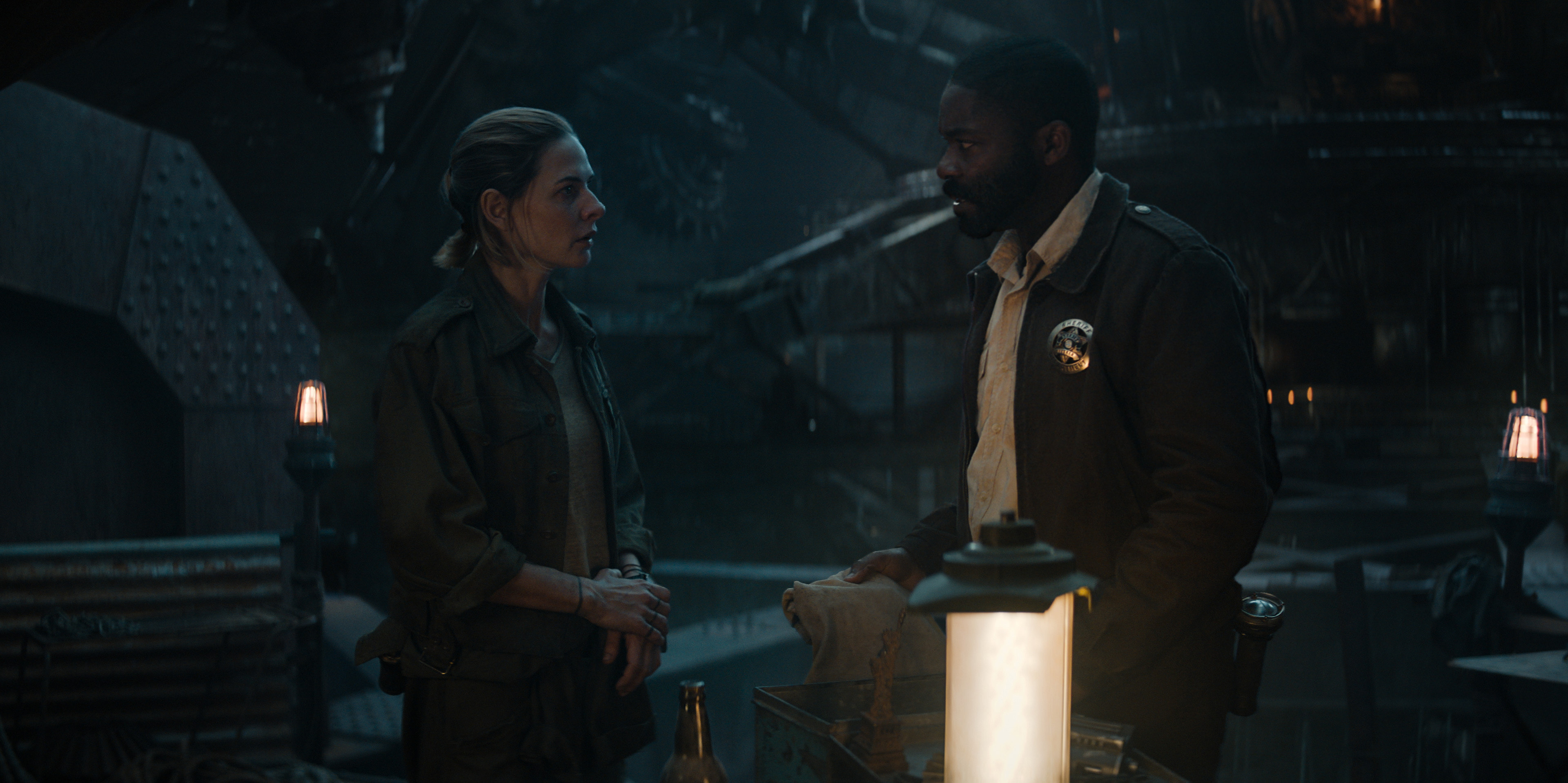
The great mystery here, in many ways, is why so many people choose to clean the sensors despite swearing they’ll never do it. Perhaps it’s both Allison’s personal experience and her innate interest in history and truth that leads to the episode’s climax, when she cuts out her own birth control then makes a scene in the cafeteria, saying the words you can never say: “I want to go out.” There’s something fascinatingly ambiguous about watching the footage of both Allison and Holston’s deaths, because we can’t trust anything we’re seeing through a screen, either the verdant green hills and blue skies in Holston’s visor or the dusty apocalyptic landscape displayed in the cafeteria windows.
“Holston’s Pick” deepens that intrigue using some flashbacks to Juliette’s unsanctioned relationship with George Wilkins (Ferdinand Kingsley), whom she claims was murdered. In fact, it gets a bit repetitive to see how many times Juliette insists it was murder in this episode, in several different scenes. But Ferguson’s performance is really working for me—you can feel the repression in her twitchy body language, her discomfort with opening up about anything. It’s a powerful (but not out-of-character) contrast to her more relaxed, affectionate demeanor with George.
It’s clear that Juliette will end up the new sheriff of the Silo in the coming episodes, which could deepen the murder mystery element already present with her investigation into her ex-boyfriend’s death. That’s a smart choice for a show where the stakes may get abstract, depending on how long it takes to learn the truth about what’s really going on. With its somewhat thin characters (for now) and high-concept sci-fi hook, Silo feels a bit like the streaming equivalent of the type of network genre show that proliferated in the wake of Lost—something like The Event or Revolution, but with a very strong writer at the helm and an Apple-size budget. Most of those shows flamed out early, but this one has real potential as a good old-fashioned sci-fi thriller with mind-bending twists. As a big fan of Wool, I’m ready to become a fan of Silo.
Stray observations
- If it wasn’t clear, these reviews should be accessible to both new Silo viewers and anybody who wants to refamiliarize themselves with season one in the leadup to season two this fall (which I’ll also be covering). But I also haven’t watched ahead at all, so reviews won’t discuss plot points from any episodes later than a given week’s episode. Feel free to label your own comments with a spoiler warning if you want to discuss later episodes, or discuss details from the books—I’ve read Wool, but neither of the sequels, which I plan to pick up soon.
- I will also admit that watching Fallout (and playing Fallout 3) recently makes some of this stuff feel a tad less novel to me—I’m also thinking back to City of Ember—but it’s still a pretty distinct setting, especially with the cleanings.
- It’s hard to argue with Holston’s point that Allison should’ve come to him and told other people when she figured out the truth, rather than suddenly choosing to go outside.
- Okay, so Allison tells her husband that if her theory is correct and it is beautiful and safe out there, she’ll clean, but if she’s wrong, she won’t clean. But shouldn’t it be the other way around? And how does that really prove anything either way when the sensors have the ability to lie? I’m also not sure her theory makes sense about people cleaning in order to show the truth about the screen—why would they expect it to show anything different than usual after rubbing it with wool?
- I think the episode mostly does a good job showing that Allison is interested in the Silo’s history separate from her own personal baggage—both the sadness over not having a kid and the trauma from realizing the doctor has been sabotaging her. But I’m curious what others think about her slide into delirium.
- I’m still not sure I fully get how “sanctioned” relationships work and how seriously people take them. Juliette seems worried to admit to hers while talking to Holston, but when George was still alive she seemed pretty carefree about it.
- The set of the hidden tunnel with the massive buried digger is pretty cool, but those scenes are just so distractingly dark.
- Holston recommending Juliette as sheriff suggests that he recognizes her as the best shot at exposing the same secrets his late wife (and Juliette’s late boyfriend) learned about the Silo, so maybe he has some more clues from beyond the grave. I also expect to see him again in at least a couple flashbacks—and hey, maybe even present-day scenes if his death was a lie.
- Speaking of which, both of these episodes do jump around the timeline quite a bit, which can somewhat disrupt the flow even when it’s easy to keep everything straight.
- In both the book and the show, I really love the world-building detail of the friendly porters always scurrying up and down the stairs with heavy deliveries strapped to their backs.

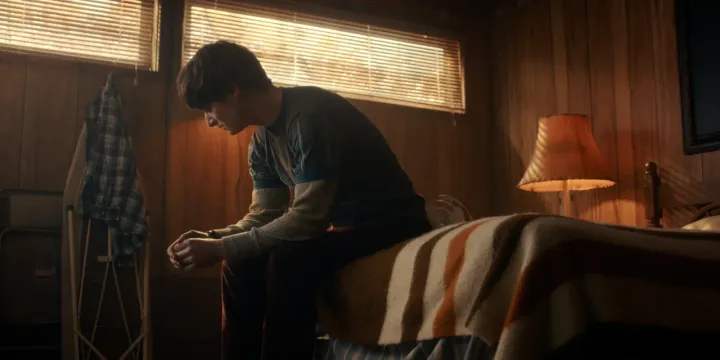
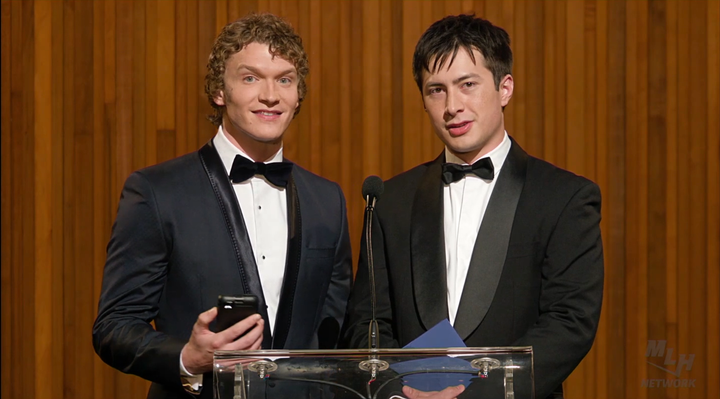

Comments ()